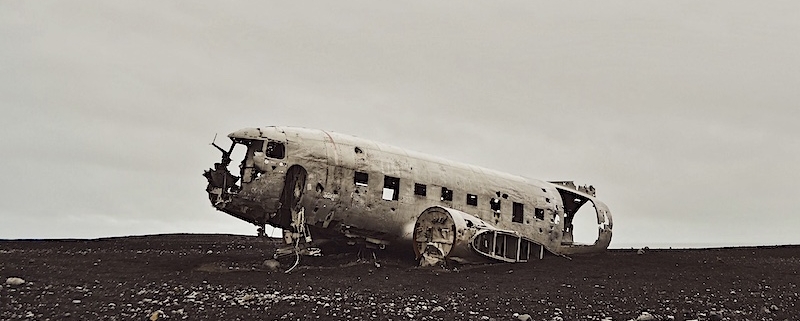Why green growth is a fiction we shouldn’t fall for

Green growth is a popular concept to counter the threat of ecological collapse. It soothes people’s minds and suggests there is an easy way out. But it is based on the wrong premises. More so, it’s a mere frame to help sustain the economy that caused our present problems in the first place, and that is bound to fail.
Growth, in any color or substance, has a twin sibling that never leaves its side. The name of that sibling is Complexity. Wherever Growth goes, Complexity follows. Moreover, Complexity has a nasty strike. It is greedy. With every new step of Complexity, its hunger for energy doubles. Twice as complex results in four times more hunger for energy. It leads to an exponential explosion of our fundamental problems.
Growing electric
An everyday example best illustrates that process. Let’s take a look at electric cars, one of the most common examples of green growth. To accommodate our growing need for transportation, electric vehicles were introduced to reduce the greenhouse gas emissions that traditionally accompany growth, and they do, compared to fossil fuel-driven cars. However, the ‘but’ is an entirely new system that must be created to operate them. Electric vehicles need to be charged, so we must build networks of charging stations that require grid extensions and additional power generation.
Power is supposed to be renewable, so we must create new solar and wind parks. The electrical engines of cars, solar panels, and their converters, and wind turbines need rare earth metals for their construction. Producing those implies wide-scale new mining activities that consist of excavating, processing, transporting, and sometimes even developing additional infrastructure, not to mention demolition of entire villages.
A frequently overlooked aspect of electric driving is the payment system that comes with the charging infrastructure. Filling up a conventional car takes one card, or even just cash. Charging an electric car, however, requires digital payment, which is spread over dozens of different providers that all issue their own cards. All those payment systems are individually managed and hosted, resulting in a load of new, duplicate data operations that each require extra energy and the production of additional hardware to operate.
Another popular example of green growth is climate engineering. Such as building machines that remove carbon dioxide from the atmosphere that would result in an entire industry creating hundreds of thousands, if not millions, of energy-gobbling and resource-devouring devices. Yes, it will create many jobs and make lots of money. But can we sustain the ramifications?
Because there is another participant to consider. The same way as Complexity follows Growth in every step, does Murphy (you know, the guy who said that whatever can go wrong, will go wrong). And Murphy and Complexity are very close friends. The recent blackout in Spain and Portugal is but a small example of it; the COVID pandemic is another, more consequential one.
Simply changing cars’ means of traction or creating equipment to remove CO2 from the air results in additional new, complex support systems, which in turn result in a domino effect of new complex developments, an accelerating demand for energy and resources, and higher risk.
Growing bust
However, these examples, obvious as they may seem, don’t do justice to the true nature of the complexity that emerges from ongoing and accelerated growth. Nor do they illustrate the cascading consequences if something goes wrong.
The rise and fall of Northvolt, the prestigious multibillion-dollar European battery project, shows that in greater detail.
Northvolt was founded in 2015 by former Tesla executives Peter Carlsson and Paolo Cerruti. The company aimed to break Asia’s dominance in battery cell production by building massive, sustainable gigafactories in Sweden and beyond, supplying European automakers like Volkswagen and BMW with locally produced batteries.
Backed by over $13 billion in debt and equity, and with high-profile contracts from Volkswagen, Scania, and others, Northvolt rapidly expanded its operations. Its flagship factory in Skellefteå, Sweden, began producing batteries in 2021, and the company soon announced plans for additional plants in Germany, Poland, and Canada. At its peak, Northvolt boasted more than $50 billion in future contract commitments and was celebrated as a symbol of Europe’s green industrial ambitions.
However, the company’s rapid ascent masked deep structural challenges. Northvolt’s business model was no match for the capital-intensive, complex world of battery manufacturing. The company faced fierce competition from established Asian manufacturers, struggled with production delays, and relied heavily on Chinese suppliers for key machinery and materials. Operational missteps, such as over-hiring, confusion during rapid scaling, withdrawn contracts, and political inconsistency (European governments ending subsidies on electric cars), completed the chain of complexity-induced systemic failure. In March 2025, the company filed for bankruptcy.
From complex to collapse
The Northvolt example introduces yet another risk factor in complex developments: speed. Accelerating developments eventually outpace the capacity of any organization to keep up with changes and respond adequately to them. It sets a death spiral in motion of problems to solve, while problem-solving itself increases the system’s complexity, and thus its energy demand, both in fuel and human effort. As a result, the marginal returns of the investments, whether a project, an organization, or a civilization, decrease and eventually turn negative. That’s when collapse sets in.
Joseph Tainter, historian and anthropologist, described this principle in his 1988 book The Collapse of Complex Societies.
Tainter’s theory suggests that contemporary global civilization, characterized by high complexity and energy dependence, could face similar risks as previous civilizations. The challenges of climate change, resource depletion, and economic inequality may exacerbate the strain on societal systems. Tainter emphasizes that while collapse is not inevitable, without significant changes in how societies manage complexity and resource use, the risk remains substantial.
He explains that civilizational collapse is not a rare catastrophe, but a recurring and natural process throughout human history. He defines collapse as a rapid loss of societal complexity. Societies become complex in solving problems, but complexity comes with rising costs, particularly in energy and resources. Over time, these costs increase while the benefits diminish. When a society reaches the point where the returns on complexity no longer justify the expense, collapse becomes increasingly likely. It doesn’t require a single dramatic event, just the steady passage of time under mounting stress.
Tainter emphasizes that complexity, though essential, is never free. In ancient societies, it was paid for through labor and higher taxation. In today’s world, it’s largely subsidized by fossil fuels, which make it seem affordable. But as fossil fuel dependence becomes problematic, maintaining our current level of complexity without them may not be possible. He points to the Roman Empire as a case study: it responded to crises by growing more complex, expanding its bureaucracy and military, but eventually could no longer sustain itself, leading to collapse. This pattern, he argues, can be seen in many societies.
He notes specific warning signs that suggest a society may be approaching collapse: higher taxes with fewer local benefits, rising dissatisfaction, inflation, ideological division, and increased government rigidity. These were present in ancient societies and may be appearing today as well.
Whether climate change could cause collapse, Tainter believes the issue isn’t just environmental, it’s economic and structural. Adapting to climate change requires more complexity, which in turn requires more energy and resources. The key question is whether we can afford the rising adaptation costs, especially if renewable energy sources cannot scale quickly or flexibly enough to replace fossil fuels.
Tainter is skeptical that societies can voluntarily simplify. He cites the Byzantine Empire as a rare exception: it survived a major crisis by drastically reducing its complexity, but only because it had no other choice. In general, societies respond to crises by adding more layers of complexity, not fewer.
Complicating innovation
Innovation, often seen as a solution to resource and environmental challenges, also follows this diminishing returns pattern. Tainter’s research shows that scientific and technological progress is becoming more complex and expensive over time. Producing each new breakthrough now requires more people, institutions, and effort than in the past, yet yields smaller returns.
Despite the grim implications of his theory, Tainter doesn’t believe collapse is inevitable. He argues that education could make a difference, especially by teaching younger generations to think more broadly about systems, time, and consequences. Our species tends to “muddle through” crises, he says, but that may not be enough to handle the challenges ahead. The future depends on how well we understand the hidden costs of our way of life and whether we can change course in time.
Changing course means reducing complexity. Reducing complexity starts with slowing down and reconsidering growth. Reconsidering growth as the propelling principle of the present economy means stepping back from green growth as well. If Tainter is right, and I see no reason to believe he’s not, the answer lies in accepting alternatives like Degrowth and a steady-state economy.
Both history and the laws of complexity show that growth, whatever the color, inevitably leads to collapse. Don’t fall for it.


